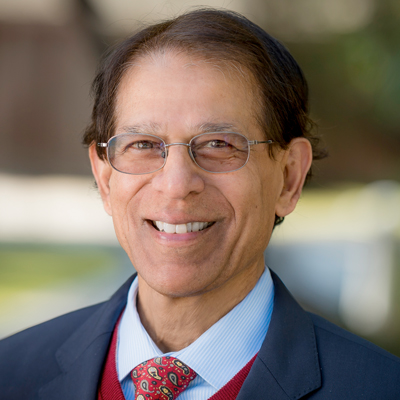Identifying Key Factors of the Healthy Aging Process
An unprecedented demographic change is sweeping the globe, with enormous and widespread consequences for humanity: the aging of the population. The average lifespan of Americans has increased from 45 years in 1900 to 75 years in 2000, and will reach 90 by 2050. Today there are 550 million people in the world over age 65; in 2050, this number will reach 2 billion, including 1 million centenarians. Older adults will outnumber children under 15 – a notable inversion of the age distribution of our society. Among seniors there will be multiple subgroups (e.g., ethnic minority elderly, multiple gender identification, etc.) with diverse assets and needs. This aging of the population is viewed with increasing alarm because it will have a major impact on social security, Medicare, housing, jobs for younger generations, etc. There is growing evidence for plasticity in aging – positive changes in the brain and other tissues, in association with appropriate physical activities, targeted nutrition, and psychosocial stimulation along with necessary healthcare and social support. Helping people age successfully can help turn what has been dubbed the Silver Tsunami into a Golden Wave by empowering seniors to be more productive, contribute more to the society, and become wise mentors for youth. Dr. Dilip Jeste, Director of the UC San Diego Center for Healthy Aging, is seeking to enhance and promote quality of life in older adults by investigating factors and strategies that promote healthy aging as well as interventions that enhance positive psychosocial traits known to increase longevity like resilience and optimism.
Since taking over the Directorship of the Stein Institute for Research on Aging at the University of California, San Diego 10 years ago, Dr. Dilip Jeste’s research focus has been dedicated to the understanding and promotion of successful aging; his primary focus has been on brain and mental aging. Successful aging is the idea of growing older without losing significant cognitive ability of function, and Dr. Jeste is approaching this contact through two steps:
-
Why do some individuals age successfully, in spite of other physical problems, while others do not?
-
How is it possible that people’s mental abilities (brain structure and function) can improve with age?
Dr. Jeste has shown that traits such as resilience and wisdom are associated with greater well-being, and are more important to an individual’s health and happiness than other lifestyle factors. He also has conducted empirical research on wisdom, including investigations into the neurobiology of wisdom, and has been successful in conducting and publishing clinical and translational research in this area, which has generated considerable media publicity.
Dr. Jeste’s current research projects study aging in animals and humans, and take the unique approach of combining a biological, as well as a psychiatric, perspective:
- Engineering and Technology for Successful Aging: Dr. Jeste and the UC Center for Healthy Aging are breaking the traditional constraints of academic departments by bringing together the country’s best scientists from varied disciplines, departments, and professional backgrounds, such as engineering, technology, computer science, geriatric medicine, pharmacy, and geriatric psychiatry, to work collaboratively on different aspects of aging. Technology in healthcare, lifestyle, and of social media is rapidly changing on a daily basis, yet proficiency in newer technology is largely restricted to the younger and more technologically-affluent segments of society. The center seeks to use engineering solutions for aging-associated impairments as an integrated enterprise that involves individuals of different ages and from diverse groups of stakeholders. Technology should serve to help compensate for functions that one loses with aging. As these losses affect many functions, Dr. Jeste is working to ensure that technology reaches out to varied aspects of life, including the design and implementation of the built environment to enhance and engage its users. The technology being used includes sensors, robotics, measures of physical activity, cognitive activities, etc. The center brings together geriatric healthcare experts, technology experts, and community representatives to design and conduct studies of feasibility, efficacy, and cost effectiveness of technology for seniors.
- Interventions in Community Setting: Individuals’ well-being cannot be assured without considering the active involvement of the entire community (- “it takes a village”). Factors that affect thriving in the community include lifestyles, intergenerational support, and ageism. Synergies need to be promoted among healthcare and psychosocial sciences to support seniors in the communities. Important components of community life also include urban planning and the built environment. Dr. Jeste has developed and conducted large community-based trials of both pharmacological and behavioral interventions to enhance and promote successful aging among people with major disabilities. Roughly 200 people between the ages of 20 and 103 dispersed around San Diego county were randomly selected to participate in a unique survey that utilizes both a biological and a psychiatric approach. MRI scans, saliva samples, and blood-base biomarkers, including genetic biomarkers, are used to run DNA analysis as well as a series of surveys and interviews to gauge a participant’s overall well-being and measure it over the course of a year to compare quality of life across age and social groups. Dr. Jeste will then attempt to transfer knowledge from UC San Diego to ethnically diverse, and often underserved, seniors in culturally appropriate and sensitive ways.
- Aging in Animal Models: In an animal study using mice, the positive effects of aging are being researched by comparing young and old mice. Mice are divided into two groups, young mice (six months or younger) and older mice (12/18 months and older), which are in turn divided into two subgroups: cognitively-impaired older mice, and those with the same levels of cognitive ability as younger mice. The mice in this last group are understood to be aging successfully, and Dr. Jeste is studying their brains from various perspectives, from its structure to the neural chemistry. This study is unique in that it looks at the entire physiological system, those other than the brain, including the lungs, heart, bones/joints, and blood-based biomarkers and is interested in the relationship the health of other body systems has on brain health. The benefits of using animal models, offering the ability to directly study brain structure, has offered a relatively complete picture of why certain mice age more successfully than others. This information can be translated to developing interventions to encourage healthy human aging.
Bio
Dr. Jeste was born and raised in India in an Asian culture that respected older age for its wisdom and experience. Upon coming to the United States, he was introduced to modern western culture, which places a high social value on youth. In the west, we fight aging with plastic surgery and a number of other invented practices, whereas in Eastern cultures aging is embraced. This stark contrast captivated Dr. Jeste’s interests, and his research ultimately reflected a synthesis of these two cultural perspectives.
In medical school, Dr. Jeste was taught that most of the brain’s development occurs very early in life, and is followed by a plateau between the ages of around 20-60, before ultimately seeing a dramatic decline in cognitive ability after the age of 60. Dr. Jeste’s research, however, shows that older people are actually, on average, happier and doing better mentally than their younger counterparts. How is this possible biologically? Dr. Jeste attributes the improvement to an increase in wisdom, a concept that increases with age, and is redefining the ideas on the association of neuroplasticity with aging.
He began his medical career studying individuals with serious mental illnesses, namely schizophrenia and dementia, and discovered that contrary to popular belief, patients often improved with age, rather than worsening psychologically. He found that patients with schizophrenia, even those diagnosed in their early 20’s, often experienced an increase in cognitive ability after age 50. In fact, Dr. Jeste’s lab is the only place in the country funded by the National Institute of Health (NIH) to study schizophrenia in older people. Ron Howard’s a Beautiful Mind starring Russell Crowe depicts a true example of this late-onset improvement and was helpful in explaining the concepts of Dr. Jeste’s research, arbitrarily, to the general public. This finding is supported by Dr. Jeste’s research, and is largely responsible for driving his interests in successful aging. His studies on mice and in the community are directed at understanding how the brain can continue to function well in old age, and he is driven by uncovering the answer explaining various ways by which age can improve, rather than diminish, an individual’s mental abilities and contributions to society.
Dr. Jeste has been widely recognized and aptly awarded for his contributions to the scientific community. He is the director of two institutes focused on researching the progression of aging, and also serves as Chief of the Geriatric Psychiatry Division at University of California, San Diego. He is a fellow of a number of psychiatric societies, including being a Distinguished Life Fellow of the American Psychiatric Association, and is a member of several geriatric societies and the Institute of Medicine. He also serves as an editorial board member and/or reviewer for many top medical journals, including the American Journal of Psychiatry and the International Journal for Geriatric Psychiatry.


